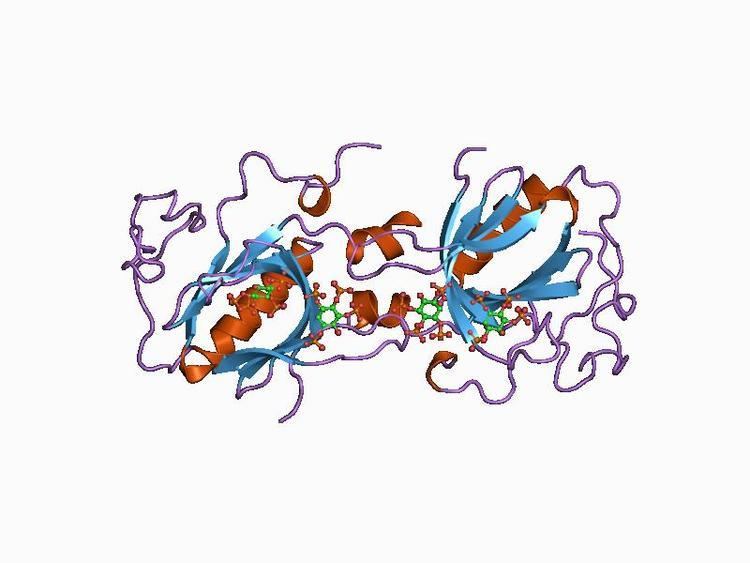Symbol BTK InterPro IPR001562 SCOP 1btk | Pfam PF00779 SMART BTK SUPERFAMILY 1btk | |
 | ||
In molecular biology, the Btk-type zinc finger or Btk motif (BM) is a conserved zinc-binding motif containing conserved cysteines and a histidine that is present in certain eukaryotic signalling proteins. The motif is named after Bruton's tyrosine kinase (Btk), an enzyme which is essential for B cell maturation in humans and mice. Btk is a member of the Tec family of protein tyrosine kinases (PTK). These kinases contain a conserved Tec homology (TH) domain between the N-terminal pleckstrin homology (PH) domain and the Src homology 3 (SH3) domain. The N-terminal of the TH domain is highly conserved and known as the Btf motif, while the C-terminal region of the TH domain contains a proline-rich region (PRR). The Btk motif contains a conserved His and three Cys residues that form a zinc finger (although these differ from known zinc finger topologies), while PRRs are commonly involved in protein-protein interactions, including interactions with G proteins. The TH domain may be of functional importance in various signalling pathways in different species. A complete TH domain, containing both the Btk and PRR regions, has not been found outside the Tec family; however, the Btk motif on its own does occur in other proteins, usually C-terminal to a PH domain (note that although a Btk motif always occurs C-terminal to a PH domain, not all PH domains are followed by a Btk motif).
The crystal structures of Btk show that the Btk-type zinc finger has a globular core, formed by a long loop which is held together by a zinc ion, and that the Btk motif is packed against the PH domain. The zinc-binding residues are a histidine and three cysteines, which are fully conserved in the Btk motif.
Proteins known to contain a Btk-type zinc finger include:
